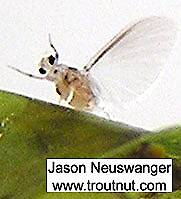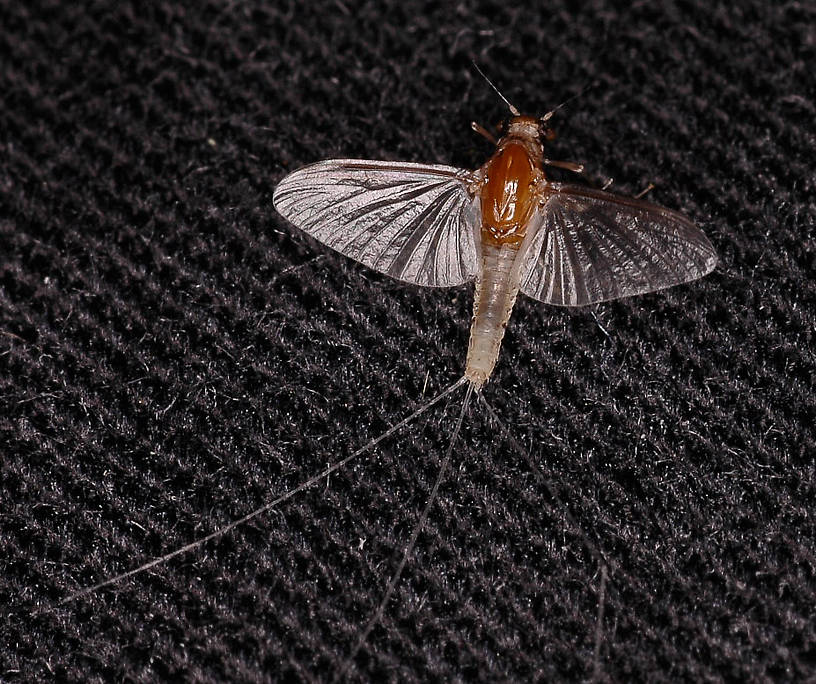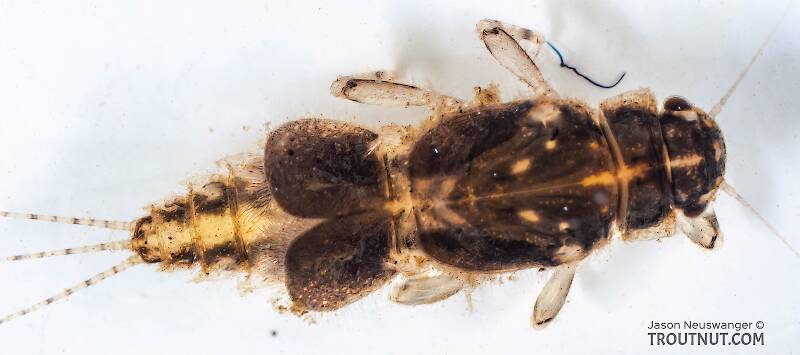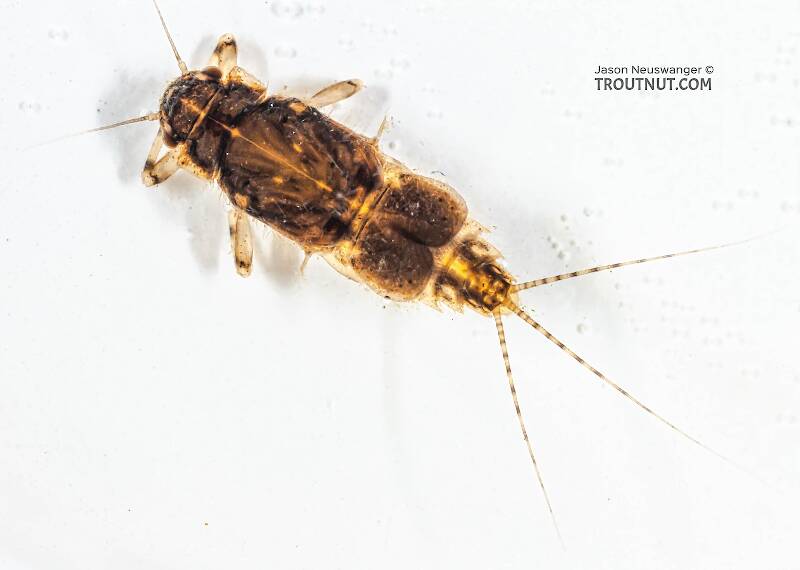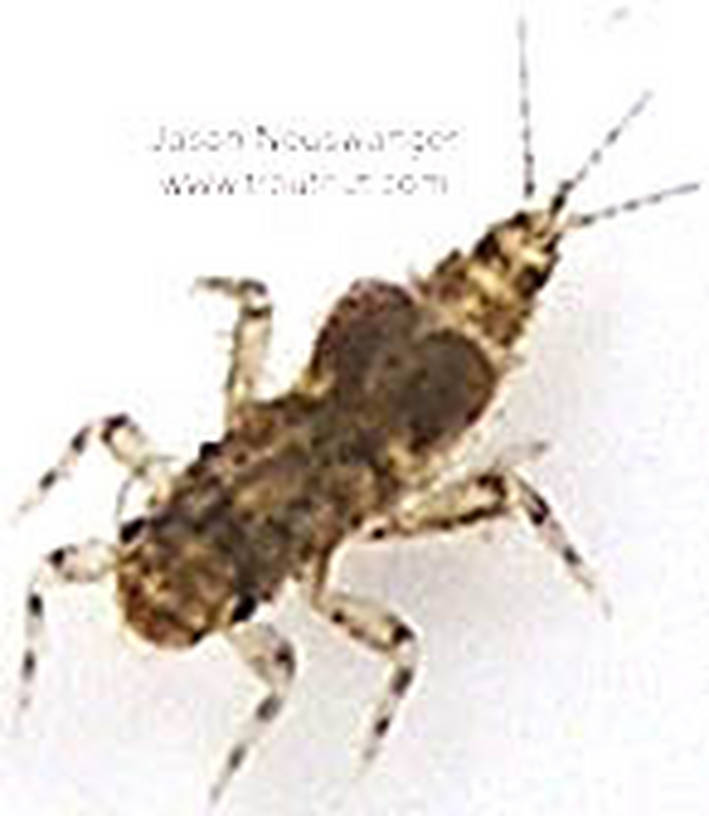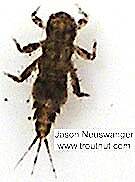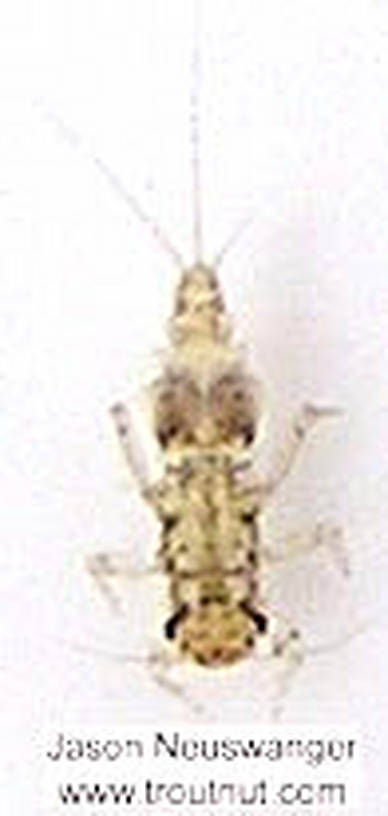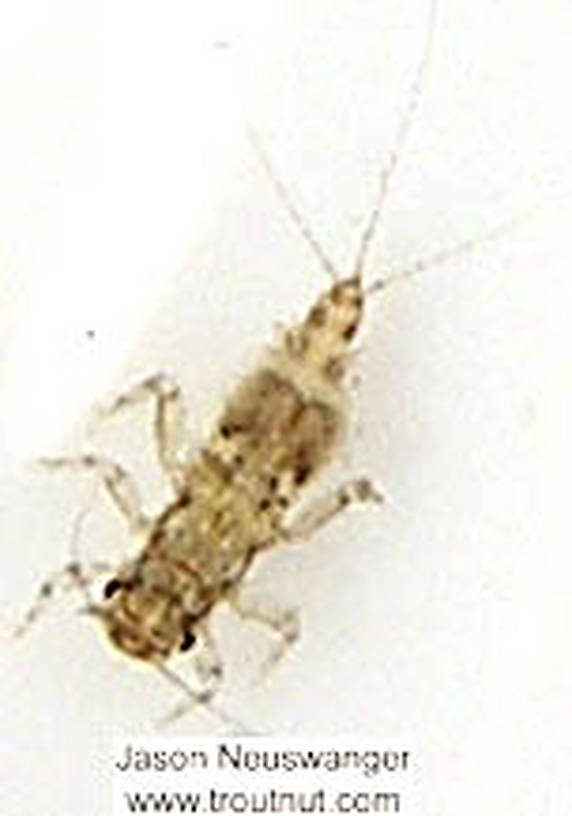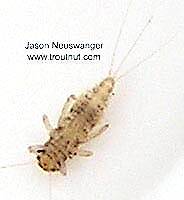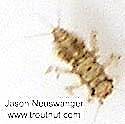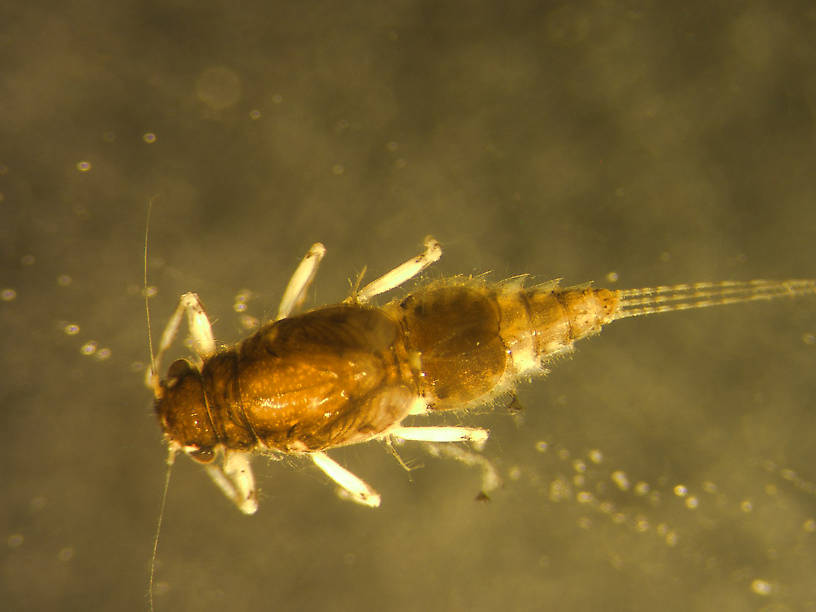
Blue-winged Olives
Baetis
Tiny Baetis mayflies are perhaps the most commonly encountered and imitated by anglers on all American trout streams due to their great abundance, widespread distribution, and trout-friendly emergence habits.
Featured on the forum
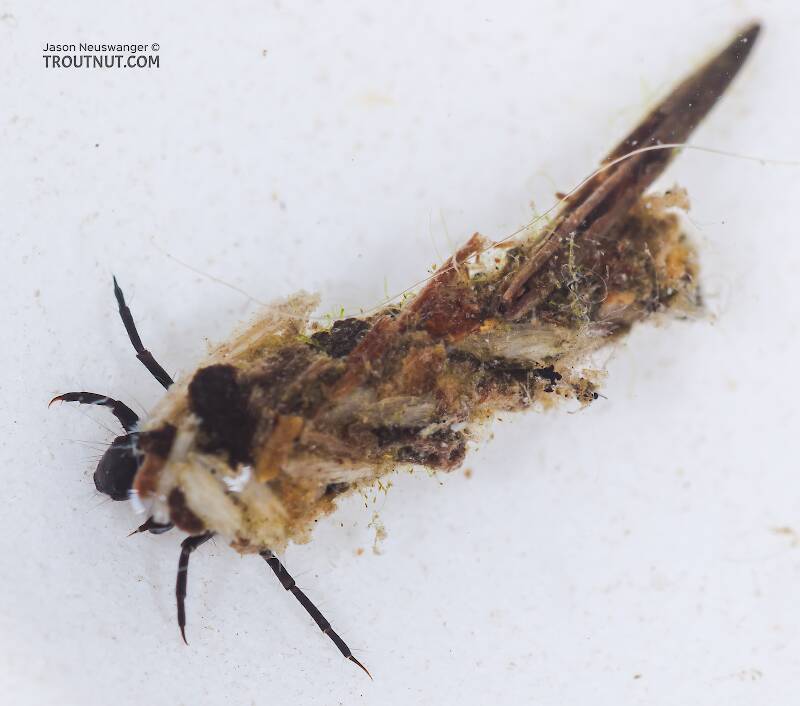
This seems to be a young larva of Limnephilus. Although not clear in the picture, several ventral abdominal segments have chloride epithelia.

Troutnut is a project started in 2003 by salmonid ecologist Jason "Troutnut" Neuswanger to help anglers and
fly tyers unabashedly embrace the entomological side of the sport. Learn more about Troutnut or
support the project for an enhanced experience here.
Mayfly Genus Caenis (Angler's Curses)
When the important hatches of Tricorythodes were first discovered by anglers, Caenis was given the credit. We now know that the Caenis mayflies are a different group, smaller and less common in trout streams, and they hatch in the evening instead of the morning.
They very rarely elicit selective feeding, but when they do they're very tough to match because they're often much smaller than size 28. This difficulty has earned them the nickname "Angler's Curse."
They very rarely elicit selective feeding, but when they do they're very tough to match because they're often much smaller than size 28. This difficulty has earned them the nickname "Angler's Curse."
Where & when
Most Caenis mayflies emerge in the evenings when other, larger mayflies are abundant on the water. This limits their importance.
In 320 records from GBIF, adults of this genus have mostly been collected during July (28%), June (26%), August (24%), May (10%), and September (8%).
In 145 records from GBIF, this genus has been collected at elevations ranging from 26 to 8022 ft, with an average (median) of 2690 ft.
Genus Range
Hatching behavior
Caenis mayflies typically emerge, molt into spinners, mate, and oviposit within one hour.Nymph biology
Substrate: Silt, weeds
Specimens of the Mayfly Genus Caenis
1 Female Dun
1 Female Spinner
9 Nymphs
Start a Discussion of Caenis
References
- Arbona, Fred Jr. 1989. Mayflies, the Angler, and the Trout. Nick Lyons Books.
- Caucci, Al and Nastasi, Bob. 2004. Hatches II. The Lyons Press.
- Knopp, Malcolm and Robert Cormier. 1997. Mayflies: An Angler's Study of Trout Water Ephemeroptera . The Lyons Press.
- Leonard, Justin W. and Fannie A. Leonard. 1962. Mayflies of Michigan Trout Streams. Cranbrook Institute of Science.
- Schwiebert, Ernest G. 1955. Matching the Hatch. MacMillan Publishing Company.
Mayfly Genus Caenis (Angler's Curses)
Taxonomy
Species in Caenis
Caenis amicaGray-Winged Blue Duns
0
0
Caenis anceps
0
0
Caenis diminuta
0
0
Caenis eglinensis
0
0
Caenis hilaris
0
0
Caenis latipennisGray-Winged Sulphur Duns
0
0
Caenis punctata
0
0
Caenis tardata
0
0
Caenis youngi
1
2
Species in Caenis: Caenis amica, Caenis anceps, Caenis diminuta, Caenis eglinensis, Caenis hilaris, Caenis latipennis, Caenis punctata, Caenis tardata, Caenis youngi
4 species (Caenis arwini, Caenis bajaensis, Caenis candida, and Caenis macafferti) aren't included.


